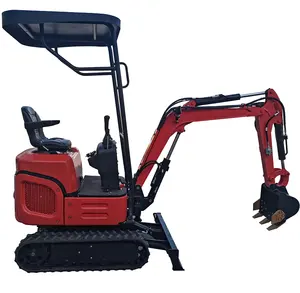Phổ biến trong ngành của bạn

Nhà Máy OEM ODM Mặt Tóc Nhận Dạng Phun Chính Xác An Toàn Cho Cơ Thể Da Tóc Cạo Râu Loại Bỏ Nhận Dạng Phun Bột

0,83 US$ - 1,00 US$
Đơn hàng tối thiểu: 100 Cái


Nhanh Khô Acrylic Phun Sơn Mùi Thấp Rose Màu Vàng Bán Buôn Xe Phun Sơn Aerosol Phun Sơn
0,55 US$ - 0,60 US$
Đơn hàng tối thiểu: 3000 Cái


Nhà Máy Bán Buôn Chăm Sóc Giày Bảo Vệ Không Màu Nano Phun Không Thấm Nước
0,79 US$ - 1,00 US$
Đơn hàng tối thiểu: 1000 Cái


Veslee Nhà Máy Bóng Sâu Màu Đen Ánh UV Bảo Vệ Phun Lốp Bọt Sạch Hơn
0,72 US$ - 0,76 US$
Đơn hàng tối thiểu: 3000 Cái


Dư Diêu songmile bán buôn 28 Mét 400 410 415 PP nhựa bọt Kích hoạt Phun 28/410 đầu chai 350 ml 500ml kích hoạt Phun chai
0,05 US$ - 0,08 US$
Đơn hàng tối thiểu: 10000 Cái
Vận chuyển mỗi chiếc: 10,01 US$


Khả Năng Chịu Thời Tiết Phun Sơn Nội Thất Tường Putty Power
1,00 US$ - 5,00 US$
Đơn hàng tối thiểu: 100 Túi

Xi Măng Trắng Dựa Tường Putty (Skim Coat)-Để Sử Dụng Bê Tông-Nhóm SETAKY
6,00 US$ - 10,00 US$
Đơn hàng tối thiểu: 5 Túi

Acrylic dựa trên xi măng Khô Trộn Skim bột bê tông tường xây dựng lớp phủ thiết bị sơn Putty bột phun ứng dụng
4,20 US$ - 6,00 US$
Đơn hàng tối thiểu: 100 Túi
Vận chuyển mỗi chiếc: 35,76 US$

Không thấm nước Skim áo bên ngoài tường thạch cao xi măng làm cho Skim áo giá sơn Putty bột
2,90 US$ - 4,00 US$
Đơn hàng tối thiểu: 100 Túi
Vận chuyển mỗi chiếc: 50,20 US$

Bột Trét Tường Bên Ngoài Chống Thấm Nước Bột Trét Sơn/Bột Trét Xây Dựng Nhà Sản Xuất
4,00 US$ - 9,90 US$
Đơn hàng tối thiểu: 1 Túi

Maydos Chống-Kiềm Bức Tường Bê Tông Bên Ngoài Thạch Cao Skim Coat (Tường Putty Bột)
0,20 US$ - 0,30 US$
Đơn hàng tối thiểu: 500 Kilogram

Sơn Tĩnh Điện Epoxy Kim Loại
4,00 US$ - 4,32 US$
Đơn hàng tối thiểu: 20 Kilogram
Vận chuyển mỗi chiếc: 151,47 US$
Các tìm kiếm liên quan:
2k rõ ràng áo phunbình xịt áo trong suốt phẳngphun áo khoác nanouv coat phun cho nhựabình xịt áo trong suốtkhông độc hại rõ ràng áo phunuv rõ ràng áo phunmàu xanh lá cây xịt tinh khiếtbình xịt hơi thở tươi 15 mlxịt zikathuốc xịt chống vi trùngphun hạt giống cỏ hydroseederphun sơn lót cao suphun coatesphun len khoáng chống cháy

2024 nhanh khô trắng Putty tường mồi vữa Venetian thạch cao nhà nội thất sơn tĩnh điện dán tường Skim Áo thạch cao sơn
0,20 US$ - 2,50 US$
Đơn hàng tối thiểu: 1 Kilogram

Lớp phủ nội thất không mùi nhũ tương sơn nhà Skim Coat
2,50 US$ - 3,00 US$
Đơn hàng tối thiểu: 100 Kilogram
Vận chuyển mỗi chiếc: 10,30 US$

Bán Bóng Bên ngoài lớp phủ không mùi nhũ tương nhà sơn Skim lớp phủ lớp phủ chống thấm tường đá hiệu ứng sơn
2,50 US$ - 2,99 US$
Đơn hàng tối thiểu: 25 Kilogram

Áo Khoác Skim Cho Tranh Treo Tường Trong Nhà Và Ngoài Trời Sinoasia
2.500,00 US$
Đơn hàng tối thiểu: 1000 Kilogram

Vissney Lớp Phủ Nội Thất Sơn Phủ Không Mùi Sơn Phủ Gia Đình
3,25 US$ - 4,18 US$
Đơn hàng tối thiểu: 100 Kilogram
Vận chuyển mỗi chiếc: 34,25 US$

Bột Trét Sơn Tường Bên Ngoài Chống Thấm Nước Bột Trét Sơn Skim Giá
2,00 US$ - 5,00 US$
Đơn hàng tối thiểu: 100 Túi


Sửa Chữa Lớp Phủ Tường Putty San Lấp Mặt Bằng Cho Tường Nội Thất Và Ngoại Thất
9,00 US$ - 18,00 US$
Đơn hàng tối thiểu: 1 Bộ

Hualong thạch cao Trắng Skim Áo tường Putty cho trang trí
1,90 US$ - 2,50 US$
Đơn hàng tối thiểu: 100 Kilogram
Vận chuyển mỗi chiếc: 50,20 US$

Bột Trét Tường Nội Thất Giá Sơn Trét Tường Xi Măng Bột Trét Sơn/Nhà Sản Xuất Bột Trét Xây Dựng
4,00 US$ - 9,90 US$
Đơn hàng tối thiểu: 1 Túi

Không thấm nước skimcoat bên ngoài tường thạch cao xi măng làm cho Skim áo giá sơn Putty bột
55,00 US$ - 65,00 US$
Đơn hàng tối thiểu: 100 Túi

Bột Trét Tường Xi Măng Trắng (Sơn Trơn)-Dùng Cho Bê Tông
1.000,00 US$ - 2.200,00 US$
Đơn hàng tối thiểu: 5 Tấn

Bột Trét Tường Bên Ngoài Chống Thấm Nước Bột Trét Sơn/Bột Trét Xây Dựng Nhà Sản Xuất
4,00 US$ - 9,90 US$
Đơn hàng tối thiểu: 1 Túi

Thạch cao trắng Skim Áo tường Putty cho trang trí Primer sơn
1,90 US$ - 2,50 US$
Đơn hàng tối thiểu: 100 Kilogram
Vận chuyển mỗi chiếc: 50,20 US$

Hà bắc tầng phun skim áo putti glue redispersible polymer bột RDP
1.500,00 US$ - 2.450,00 US$
Đơn hàng tối thiểu: 1 Tấn

Xi Măng Trắng Dựa Trên Chống Nứt Mịn Skim Coat Tường Putty
1,00 US$ - 4,00 US$
Đơn hàng tối thiểu: 100 Túi

Hualong siêu bám dính linh hoạt bên ngoài chống nước thạch cao Skim Coat
1,90 US$ - 2,50 US$
Đơn hàng tối thiểu: 100 Kilogram

S1010l Chuyên Nghiệp Điện Bất Đá Sơn Súng Phun Áp Lực Bê Tông Phun Skim Áo Vữa Máy Phun
376,81 US$ - 423,18 US$
Đơn hàng tối thiểu: 10 Đơn vị

Airless Máy phun Skim vật liệu áo yanfeng pt970 thủy lực không có không khí phun
1.300,00 US$ - 1.500,00 US$
Đơn hàng tối thiểu: 5 Cái

Bột Cao Su Polymer Có Thể Phân Tán Trên Vữa Vữa Trộn Khô Dựa Trên Thạch Cao Vôi Xi Măng Cho Lớp Phủ Skim Keo Dán Tường
1,45 US$ - 1,50 US$
Đơn hàng tối thiểu: 1000 Kilogram
Vận chuyển mỗi chiếc: 3,94 US$

Airless Máy phun Skim vật liệu áo yanfeng pt970 thủy lực không có không khí phun
1.300,00 US$ - 1.500,00 US$
Đơn hàng tối thiểu: 2 Bộ

Profecional điện phun súng áp lực bê tông phun Skim Áo vữa phun máy
400,00 US$ - 420,00 US$
Đơn hàng tối thiểu: 2 Cái
Vận chuyển mỗi chiếc: 1.009,46 US$

Hà bắc tường phun skim áo bột redispersible polymer RDP
1.500,00 US$ - 2.450,00 US$
Đơn hàng tối thiểu: 1 Tấn

Hualong bóng trắng chống nứt nhanh chóng làm khô tường bê tông Skim Áo thạch cao (loại bột)
1,90 US$ - 2,50 US$
Đơn hàng tối thiểu: 100 Kilogram

Sơn phun cấp 5 và Skim áo lớn khu dân cư nhà thầu phun máy
1.300,00 US$ - 1.600,00 US$
Đơn hàng tối thiểu: 2 Bộ
Các danh mục hàng đầu
Giới thiệu về bình xịt áo khoác skim
bình xịt áo khoác skim rất hữu ích tại các công trường. Chúng là những cỗ máy khổng lồ được sử dụng để mang tải cồng kềnh trong quá trình xây dựng .. bình xịt áo khoác skim được sử dụng để tải các vật liệu thô như mảnh vụn phá dỡ, sỏi, gỗ, cát, gạch, v.v. Chúng có khả năng chịu tải tuyệt vời . Nhu cầu của bạn về chất lượng tiêu chuẩn. bình xịt áo khoác skim sẽ được Alibaba.com đáp ứng.
bình xịt áo khoác skim được trang bị công nghệ được phát minh một cách thông minh. Chúng có một số tính năng vận hành để dễ dàng vận chuyển .. bình xịt áo khoác skim được cung cấp hai bánh trước và hai bánh sau lớn. Do đó, chúng có thể di chuyển nhanh chóng với tải trọng được gắn trên chúng .. bình xịt áo khoác skim giúp bạn giảm lao động chân tay và nâng cao năng suất tại các địa điểm xây dựng.
Máy xúc lật được phân loại thành các danh mục khác nhau dựa trên cơ chế của chúng và nhiệm vụ mà chúng thực hiện .. bình xịt áo khoác skim có thùng hoặc nĩa hình vuông rộng và chắc chắn được gắn ở cuối của hai cánh tay. Các cấu trúc giống như xô này xúc các chất rời khỏi mặt đất .. bình xịt áo khoác skim đi kèm với hệ thống kiểm soát thích hợp để quản lý thông minh các quy trình bốc và dỡ hàng. Alibaba.com cho phép bạn khám phá phạm vi rộng các trình tải để lựa chọn yêu cầu. bình xịt áo khoác skim.
Máy xúc làm giảm bớt công sức của bạn khi tải và chở các vật liệu xây dựng nặng. Tìm những gì phù hợp nhất. bình xịt áo khoác skim tại Alibaba.com với nhiều trình tải. Tại đây, tất cả hàng hóa dự trữ đều từ cửa hàng của các nhà cung cấp và nhà sản xuất được chứng nhận. Rốt cuộc, mọi khách hàng đều xứng đáng nhận được sự đảm bảo về mặt hàng hóa.
Máy xúc lật được phân loại thành các danh mục khác nhau dựa trên cơ chế của chúng và nhiệm vụ mà chúng thực hiện .. bình xịt áo khoác skim có thùng hoặc nĩa hình vuông rộng và chắc chắn được gắn ở cuối của hai cánh tay. Các cấu trúc giống như xô này xúc các chất rời khỏi mặt đất .. bình xịt áo khoác skim đi kèm với hệ thống kiểm soát thích hợp để quản lý thông minh các quy trình bốc và dỡ hàng. Alibaba.com cho phép bạn khám phá phạm vi rộng các trình tải để lựa chọn yêu cầu. bình xịt áo khoác skim.
Máy xúc làm giảm bớt công sức của bạn khi tải và chở các vật liệu xây dựng nặng. Tìm những gì phù hợp nhất. bình xịt áo khoác skim tại Alibaba.com với nhiều trình tải. Tại đây, tất cả hàng hóa dự trữ đều từ cửa hàng của các nhà cung cấp và nhà sản xuất được chứng nhận. Rốt cuộc, mọi khách hàng đều xứng đáng nhận được sự đảm bảo về mặt hàng hóa.













